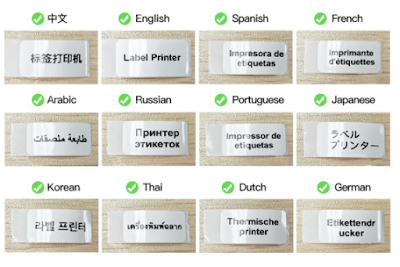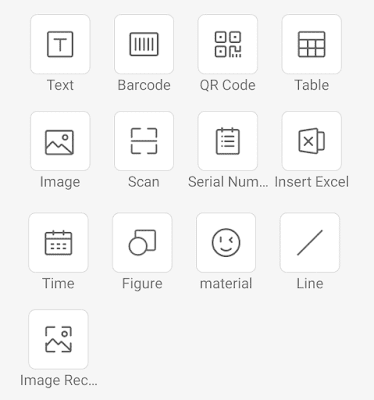I had a Brother P-Touch 65 thermal label sticker printer in my household that served for more than 15 years. It was really handy to use. Recently, it had finally reached its end of life.
As its replacement, I have bought the Niimbot D11 portable thermal label sticker printer. If you are looking for a label printer under the price tag of RM100 that is capable of doing a lot of wonders, you can consider this too.
Niimbot D11 operates with internal rechargeable battery. You can recharge its battery with its USB port from wall charger, power bank, laptop USB port, etc.
Compared with most label printers that need 6 AA size battery to power up, this rechargeable type can no doubt save quite a lot of battery money, and also easy to get recharged. However, I think we can no longer expect its lifespan to last for many years without changing its internal battery.
The Niimbot D11 printer can't operate by itself. It needs to work together with the Niimbot mobile app which you can freely download from Google Play Store and Apple App Store. The app pairs with the label printer using Bluetooth connection.
I think this is a very brilliant way to unleash a lot of design possibilities to the printer, by letting us doing the design using the mobile app.
The label printer can be fed with different kinds of label sticker, of different sizes and different pre-printed patterns and designs. The printer is able to auto-detect the type of sticker you put in it. In case it has detected wrongly, you can also manually configure it for the right sticker type with the app.
Niimbot D11 can only print in black colour, but you can buy the pre-printed label base in colourful design, or normal white background, as well as in transparent background. Labels can be purchased from Niimbot e-commerce store, or inside the app (probably for purchase within China only).
Niimbot supports printing text in multilingual, multiple lines, multiple font sizes, different alignment styles. It also comes with many different types of font.
Among the supported languages are English, Simplified Chinese, Traditional Chinese, Arabic, Russian, Japanese, Korean, Thai, and others as shown in the diagram above.
However, you need to switch the language preference in the app before you can have access to the various fonts made available to that particular language. This is a limitation that I find quite cumbersome. Hopefully this can be improved in future version of the app.
The label design interface is WYSIWYG type, and entering text is very alike using a word processor.
Beside text, you can also add in graphics and artworks to the label. There are quite a lot of ready made icons in the app too.
In fact, Niimbot D11 supports many types of printing element, including barcode, QR code, table, graphics, etc.
It can even support batch printing from lines of entry in Excel file, and also printing of serial number, current date and time, etc. This could be useful in commercial usage, such as printing of price tag, production batch, etc.
The printing speed of this Niimbot D11 is pretty fast. However, its thermal label stickers are of fixed length with gap in-between 2 stickers in a roll. This will have limitation if you want to print super long text.
All in all, I find this Niimbot D11 portable thermal label sticker printer to be value of money, and it makes label design fun and easy, with many possibilities.




















